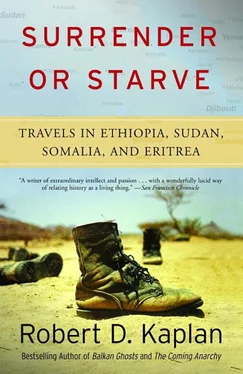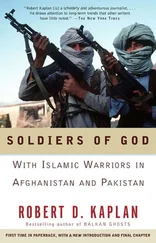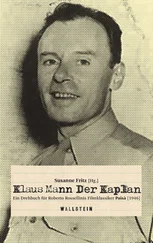Organizing transport and travel permits for a trip to the part of Tigre province controlled by the Ethiopian government took one to three days. During this period, the journalist resided at the Hilton Hotel in Addis Ababa. From there, it was a fifteen-minute drive to the airport, where the British Royal Air Force could get a reporter up to the emergency feeding camps at Makelle, in the heart of Tigre, the same morning on one of the air force’s relief flights. Having seen the RRC operation at Makelle, in February 1986, I wanted to see how the RRC’s rival, the TPLF guerrilla-affiliated Relief Society of Tigre (REST) dealt with hungry peasants in its zone. But getting into the part of Tigre controlled by the TPLF was much more difficult.
The TPLF was recognized by no one in the international community (the weapons the TPLF fought with were captured from the Dergue). Unlike Eritrea, which bordered on the Red Sea, Tigre was a landlocked province that throughout history had little or no contact with the outside world. REST had far fewer resources in terms of money and educated staff than had the RRC. The RRC, headquartered in an internationally recognized capital and run by people like Dawit who had attended university in the United States, was at least somewhat acquainted with the demands of visiting foreigners whose time in the country was limited. REST was even less so. Moreover, REST was at the mercy of the Sudanese authorities, who were far less efficient than their Ethiopian counterparts.
As with the RRC, it usually took one to three days for REST to arrange a field visit for a journalist. But instead of the Hilton Hotel in Addis Ababa, a journalist had to wait at the REST guesthouse in Gedaref, a refugee center in the wastes of eastern Sudan, several hours by bus from Khartoum.
The guesthouse was a small compound on a garbage-strewn street crowded with beggars and all types of vehicles whose drivers never stopped beeping their horns. The baking sunlight, the absence of shade, and the deafening cacophony kept most journalists inside the enclosure, where I waited three days with a British colleague for a truck convoy into TPLF territory. While we waited, we sat in uncomfortable chairs, staring at windows boarded up against the desert sun. Unboiled, unfiltered lemonade was brought in an old plastic pitcher every few hours and placed on a broken metal table covered with an oilcloth. The overhead fan didn’t work, and the room was ridden with flies. There was no running water, and the toilet facilities were unspeakable. Coarse blankets were provided for sleeping out in the courtyard. As it was late February, there were thankfully few mosquitoes, and therefore the risk of contracting malaria was slight.
After the first day, no more meals were provided at the guest-house. REST, which was strapped for funds much more than was the RRC, had a rule that thereafter visiting journalists and aid workers had to fend for themselves. As no restaurant in town served even reasonably edible food by Western standards, we ate in the main market of Gedaref, sipping heavily sugared tea and eating fried bread and grapefruits on a buckled bench amid flies and garbage, with blaring music all around. The third day, a relief worker living in Gedaref took pity on us. He gave us the keys to his house prior to leaving for Khartoum. We took hot showers and raided the kitchen cupboard, which was filled with cans of Heinz soup. The three days at the guesthouse had depleted our reading material, but all we saw on the shelves were a copy of Albert Schweitzer’s Out of My Life and Thought and an old issue of Penthouse. Those few hours passed at the relief worker’s house proved to be the most comfortable of our journey. Once inside the TPLF zone in Tigre, physical conditions were even worse than at the guesthouse.
Nevertheless, the physical discomforts I experienced were bad but not unusual by the standards of Africa-based correspondents. Others suffered worse hardships. Time correspondent James Wilde’s two-week trip along the Zaire River was far more harrowing than mine in Tigre. Gary Strieker of Cable News Network (CNN) and Blaine Harden of The Washington Post went several days without any food at all while traveling in southern Sudan with African rebels who were at war with the Arab government in Khartoum. Yet I recount the details of my stay at the guesthouse in Gedaref because they are central to an understanding of how and why the famine got reported as it did.
Journalism is competitive enough for reporters to willingly suffer the inconveniences that I did if it means getting a story that is going to greatly impress their editors. But most editors in the United States would not have been greatly impressed by the results of a trip into Tigre, where Tigrean Marxists were fighting an Amhara-dominated government that also was Marxist. Tigre held out fascinating insights into the relationship among war, hunger, and ethnic hatred. But visually it often was not exciting. Unlike the situation at the feeding camps on the government side, starving people were not always gathered together in large multitudes. The primary concern of editors was to have their reporters “in there” among starving people as soon as possible and then out again just as quickly to where there were telex and satellite facilities to transmit the story back to the United States. If a reporter could accomplish this task on a day trip by airplane from the Hilton Hotel in Addis Ababa, why wait in a hovel in eastern Sudan and then ride around in a truck convoy for two weeks in Tigre under awful, illness-producing conditions? With such a comfortable alternative, was this really necessary? People were starving everywhere. Did it matter from which side of the battle lines the famine was covered?
If famine alone were the issue, it wouldn’t have mattered much at all. But the famine was part of something larger and even more important—something that was not merely a story but an unprecedented historical process, which could be better understood from the guerrilla side because the authorities in Addis Ababa had no interest in bringing this process to light.
No other foreign news story of the decade highlighted the media’s role as public servant to the extent that the Ethiopian famine did. Television pictures and news articles brought the pain of starvation into U.S. living rooms, thereby eliciting a flood of relief aid that saved countless lives. But while the technical wizardry of television was able to make the U.S. public feel starvation, the media, by and large, failed to make the public understand it. Even newspapers, which should have been less visually oriented, became fixated with the drama of mass starvation, while the historical and political context in which the famine belonged went largely unexplored. The famine exposed a disturbing trend: television’s increasing ability to control the direction of a story and, by this very power, to intimidate the print media into following television’s lead.
Ethiopia was never really covered; the famine was. Because the effects of Africa’s longest-running war could not be seen well from the government side, the cause of the famine was mainly ascribed to drought. Thus, in the public mind, the famine became another disaster story, like the Mexican earthquake. As public service journalism this was fine. But as straight foreign news coverage—whose purpose was to make the public more sophisticated about a certain area of the world—the U.S. media failed miserably to live up to the standards it had set for itself in the Middle East, Southeast Asia, and other parts of the Third World. Because television footage was required to focus public attention on Ethiopia’s plight, and because television thus set the pace, media coverage in general was both unusually powerful and superficial.
Читать дальше












